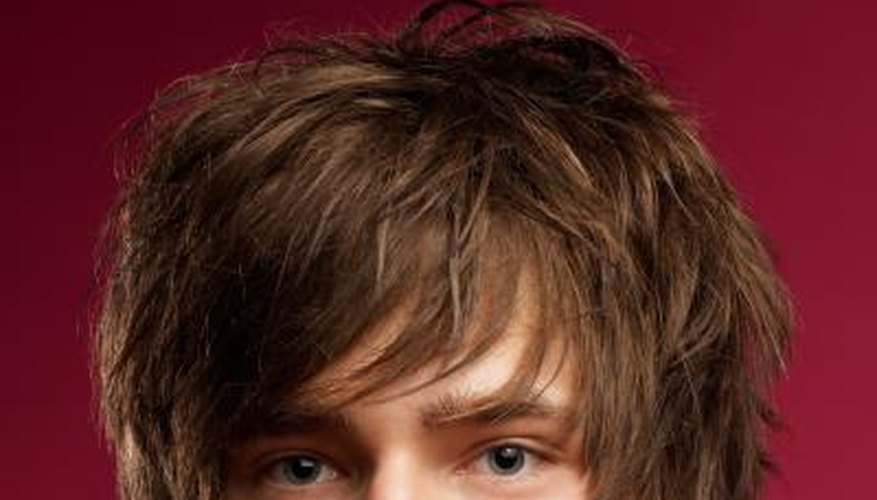Shag hair was perfect for the natural, laid-back dress code of the 1970s. The cut required little styling during a decade when lives were busier and many women were going to work. After the 1960s, it became acceptable for men to wear their hair longer, and shag hair in the '70s was unisex, with men and women often sporting similar styles.
The Cut
The shag is a multilayered haircut. Layers of hair were short around the crown but left significantly longer at the ends. This difference gave the '70s shag cut its distinct look, with choppy volume at the top, close lengths around the ears and feathered ends sitting above the shoulders in a shape that curved out. The most common length for women was around the shoulders, while men wore a style just a little shorter.
- The shag is a multilayered haircut.
- This difference gave the '70s shag cut its distinct look, with choppy volume at the top, close lengths around the ears and feathered ends sitting above the shoulders in a shape that curved out.
Styling
Smooth, sleek locks were popular and shampoo was the styling product of the decade. A shiny, just-washed look was ideal. Highly fragranced shampoos were popular, and a shag cut offered the perfect opportunity to flick around perfumed locks. Another feature of '70s shag cuts is that the lack of setting and styling showed off the structure of the cut, unlike in the '80s where layers were teased into all-over volume and used to build height. Famous 1970s shag cut wearers included Jane Fonda and Suzi Quatro.
- Smooth, sleek locks were popular and shampoo was the styling product of the decade.
- Highly fragranced shampoos were popular, and a shag cut offered the perfect opportunity to flick around perfumed locks.
Fashion
Shag hairstyles were part of a wider, casual fashion movement that swept the globe in the 1970s. While the hippie styles of the 1960s reflected a lifestyle choice, a relaxed look in the '70s became part of mainstream fashion, even for conservative dressers. Natural make-up, beachwear and a golden tan were key style ingredients, with fashion about fun and youth. The wash-and-go nature of shag hair couldn't have been more suited to this trend. The shag became mainstream, with many people wearing variations, because the cut was easy to style and wear.
- Shag hairstyles were part of a wider, casual fashion movement that swept the globe in the 1970s.
Development
The universal appeal of shag cuts has not waned since the '70s but instead has undergone many interpretations. The '80s saw hair cut in the same basic shape but grown longer and styled for maximum volume. This changed the shape of the style. Since the 1990s, the classic long underneath section of the style occasionally has reappeared, such as with Jennifer Aniston's "Rachel" cut, but shag styles now are often undercut. Men's shag styles developed into "mullets" within a few years. These involved a much closer-cut top and sides, with only the back left to grow long.
- The universal appeal of shag cuts has not waned since the '70s but instead has undergone many interpretations.
- Since the 1990s, the classic long underneath section of the style occasionally has reappeared, such as with Jennifer Aniston's "Rachel" cut, but shag styles now are often undercut.
